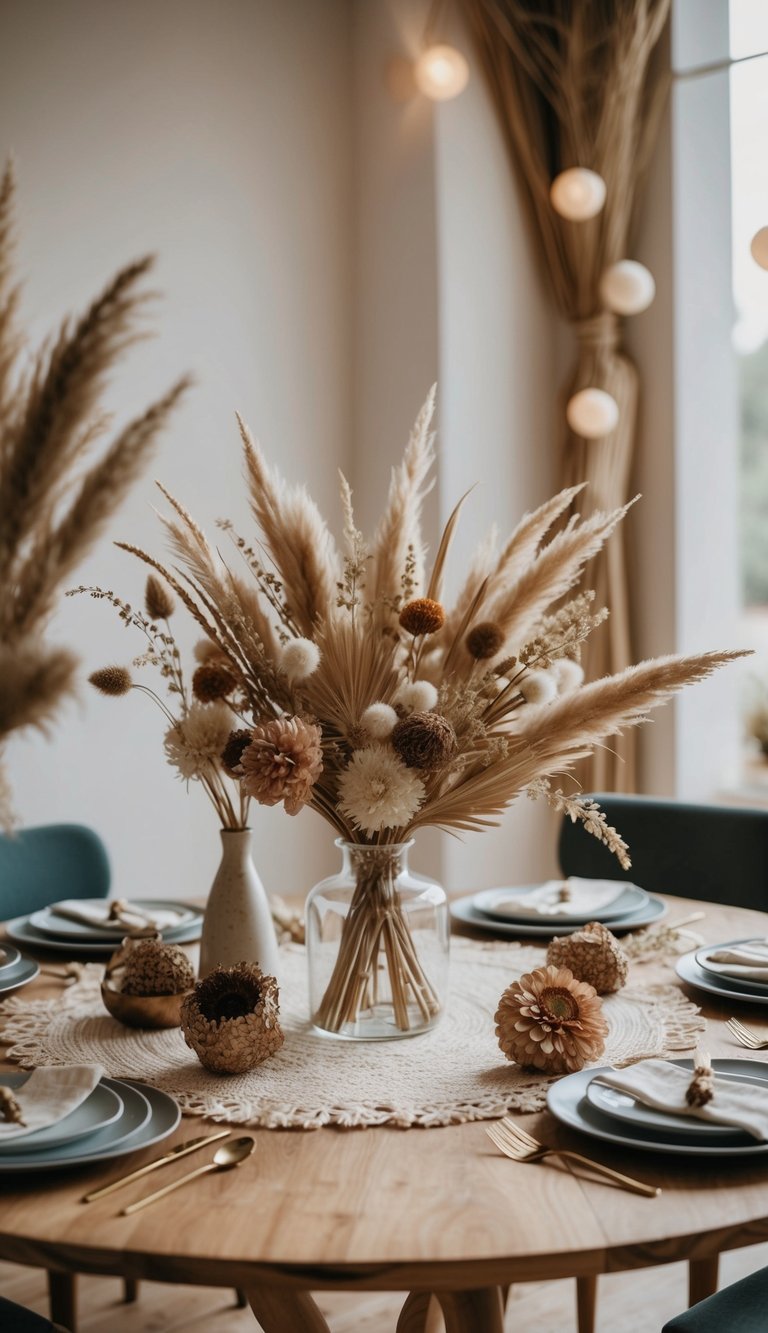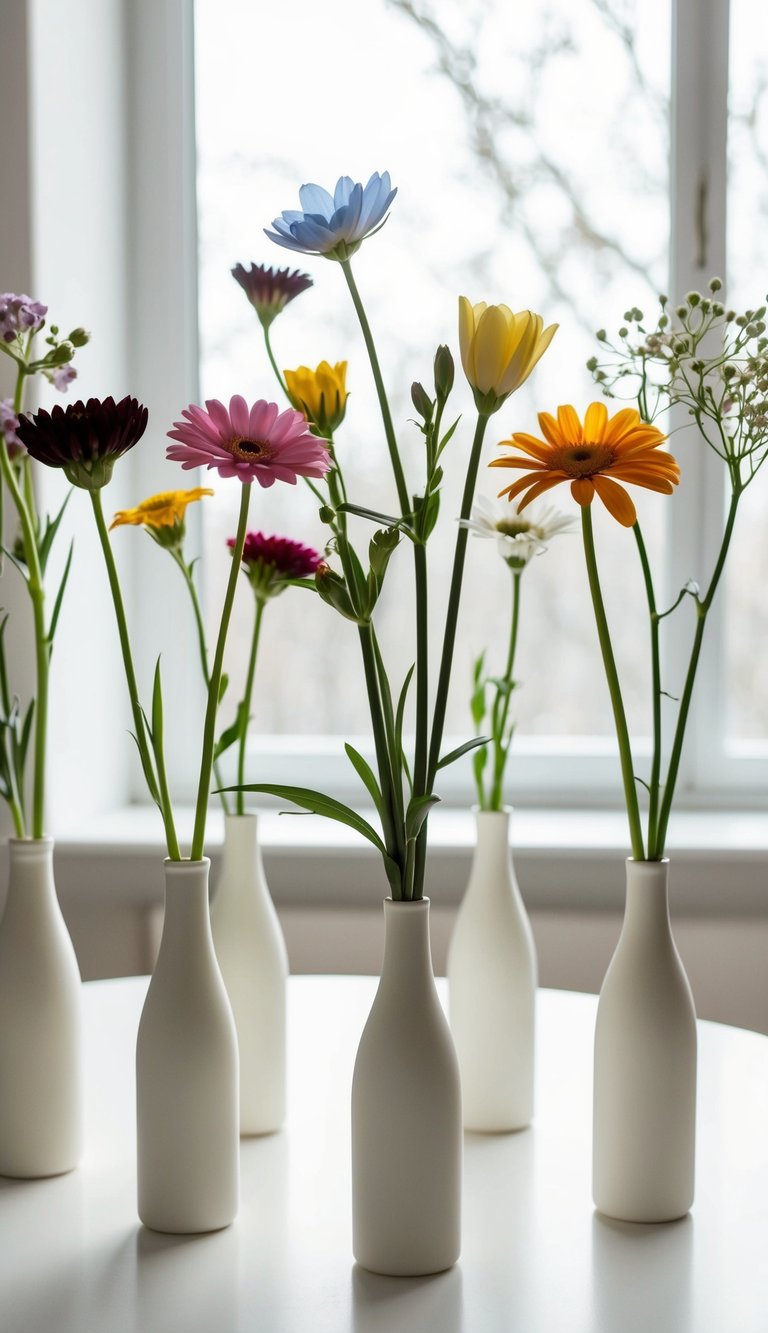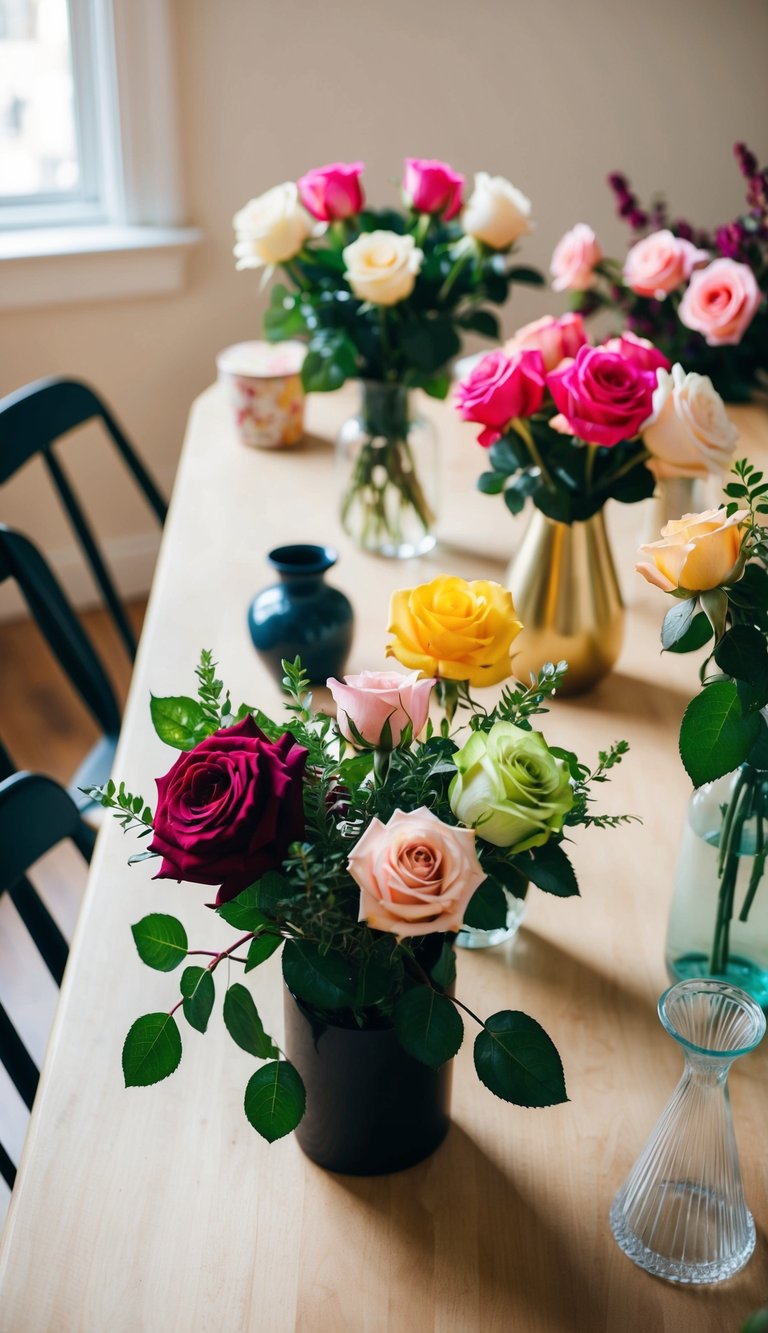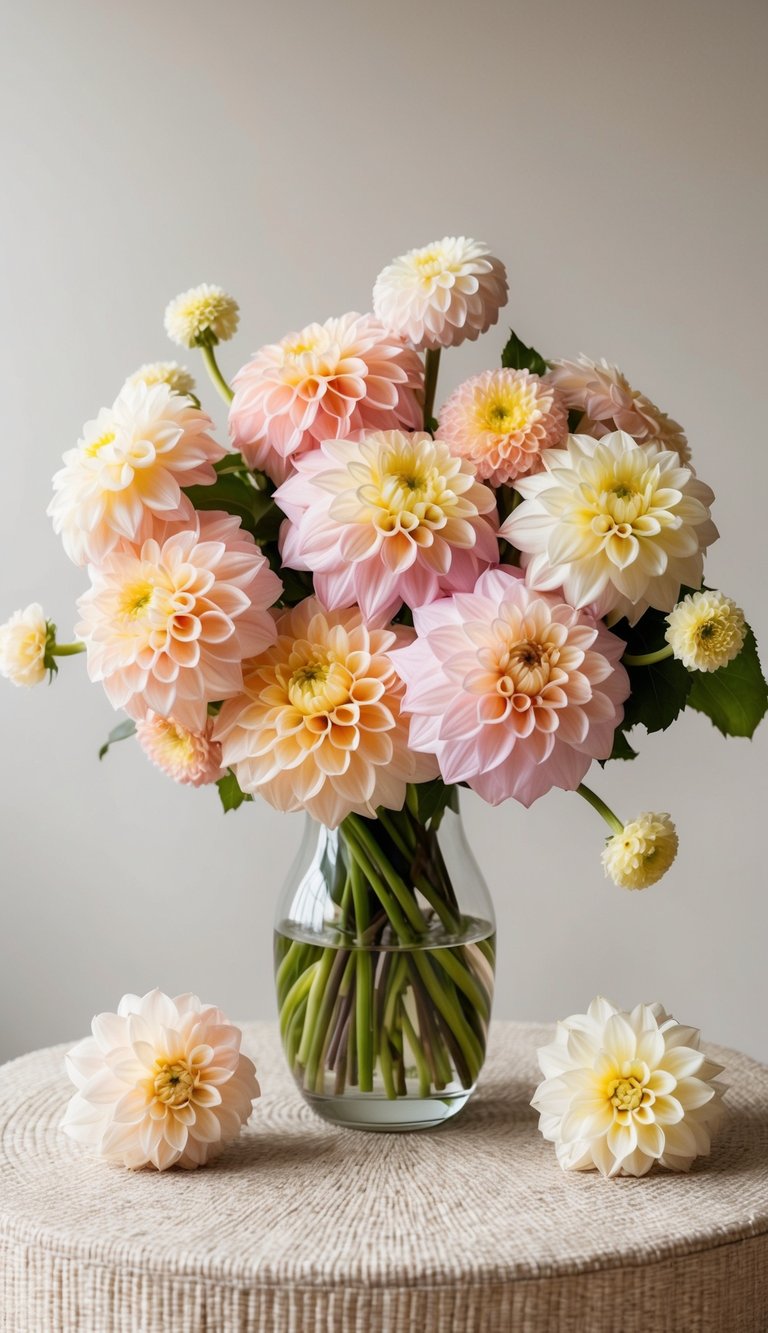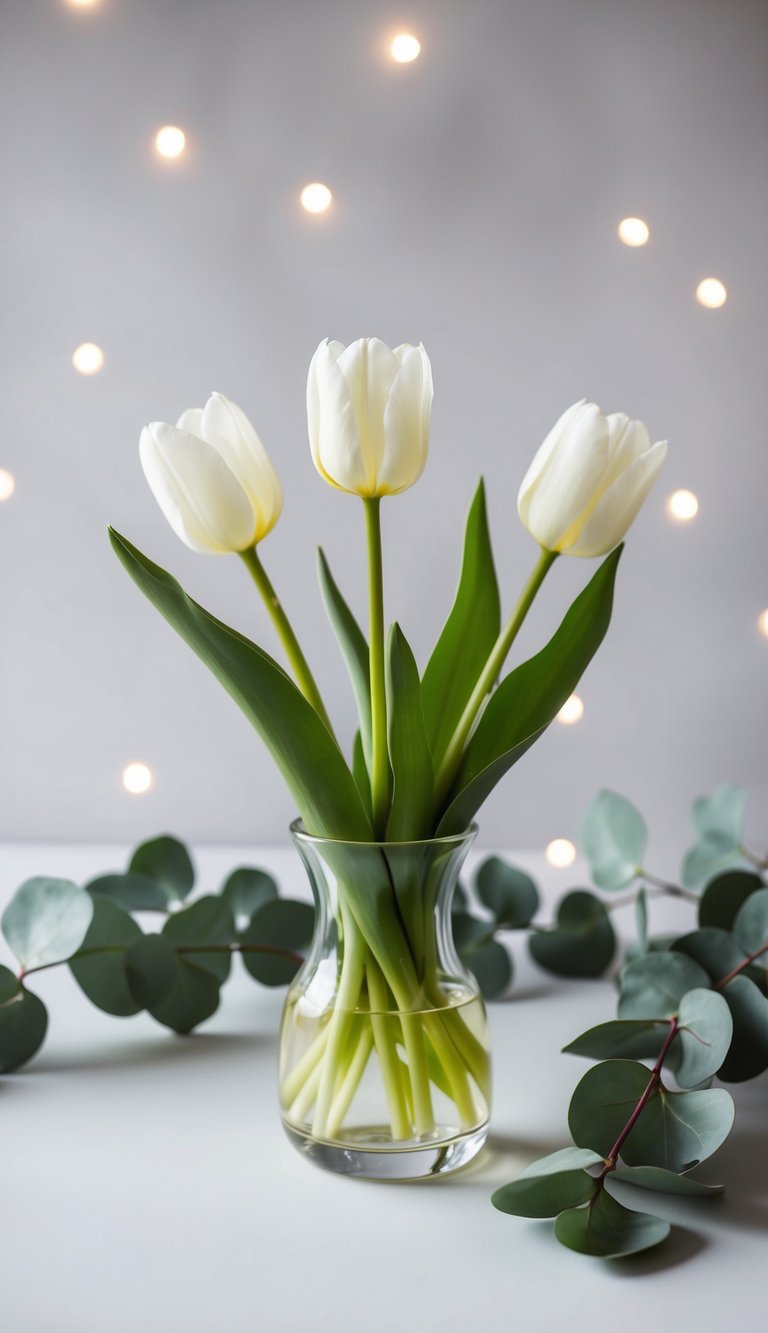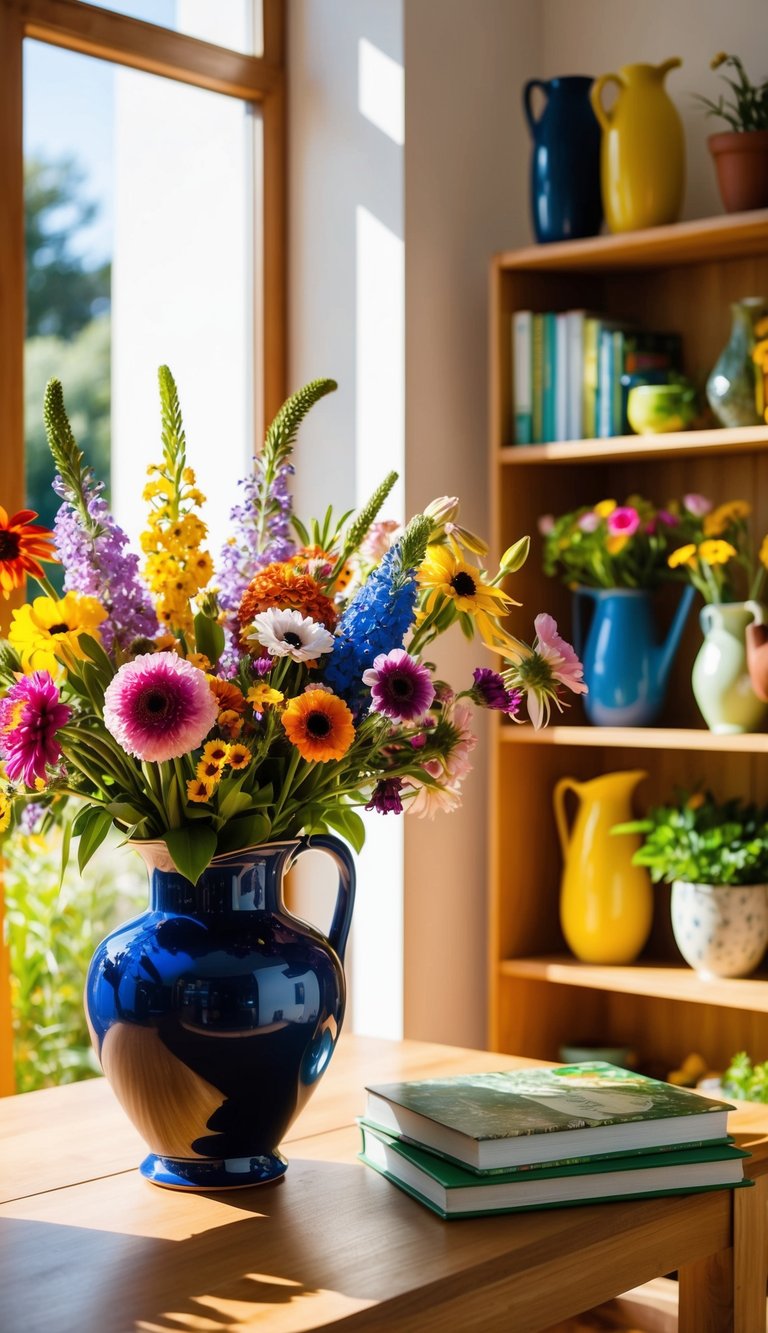10 Contemporary Flower Arrangements for Modern Home Decor
Flowers bring life and color to any space. Contemporary flower arrangements offer a fresh take on traditional designs, with unique combinations of blooms, containers, and styling techniques. These modern arrangements can transform your home or event with their artistic approach.
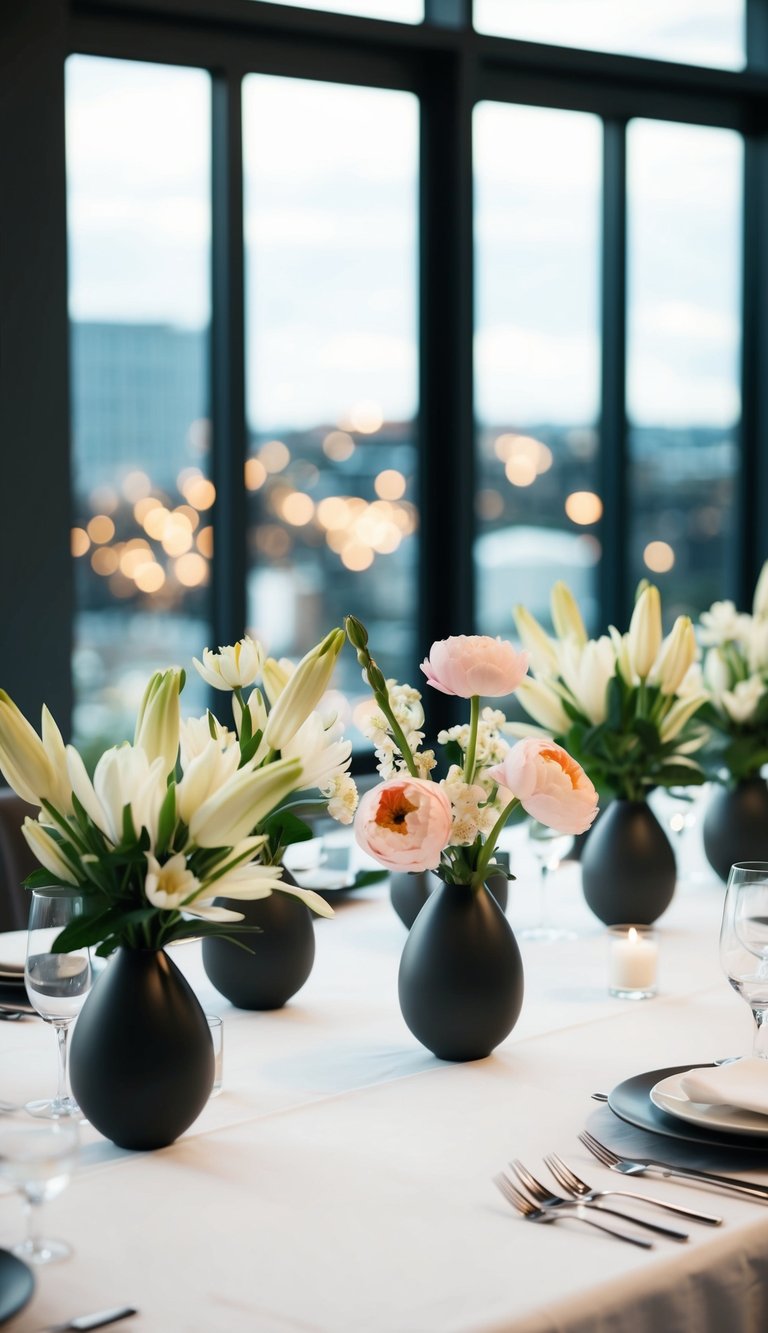
Today’s flower arrangements blend creativity with simplicity, allowing you to express your personal style through botanical art. You’ll find inspiration in these ten contemporary designs that showcase innovative uses of color, texture, and structure. From minimalist compositions to bold statement pieces, these arrangements demonstrate how floral design continues to evolve.
1. Ikebana-style minimalism

Ikebana-style minimalism brings Japanese flower design principles to modern arrangements. This elegant style emphasizes negative space and simplicity, creating a calming aesthetic with just a few carefully selected elements.
You can create this look by focusing on clean lines and asymmetrical balance. Choose a shallow container and use a kenzan (pin frog) to secure stems at precise angles that create visual harmony.
Traditional Ikebana follows specific rules about stem positioning to represent heaven, earth, and humanity. For your contemporary version, you can be more flexible while still honoring the minimalist philosophy.
Select just three to five botanical elements for your arrangement. Consider using a striking branch, a focal flower like a protea or lotus, and a small accent bloom or leaf.
The beauty of Ikebana-style arrangements comes from their thoughtful composition rather than abundance. Your arrangement should feel intentional, with each element having purpose and meaning.
Colors typically remain subtle and harmonious. Try monochromatic schemes or gentle contrasts that won’t overwhelm the clean design you’re creating.
2. Rustic wildflower charm
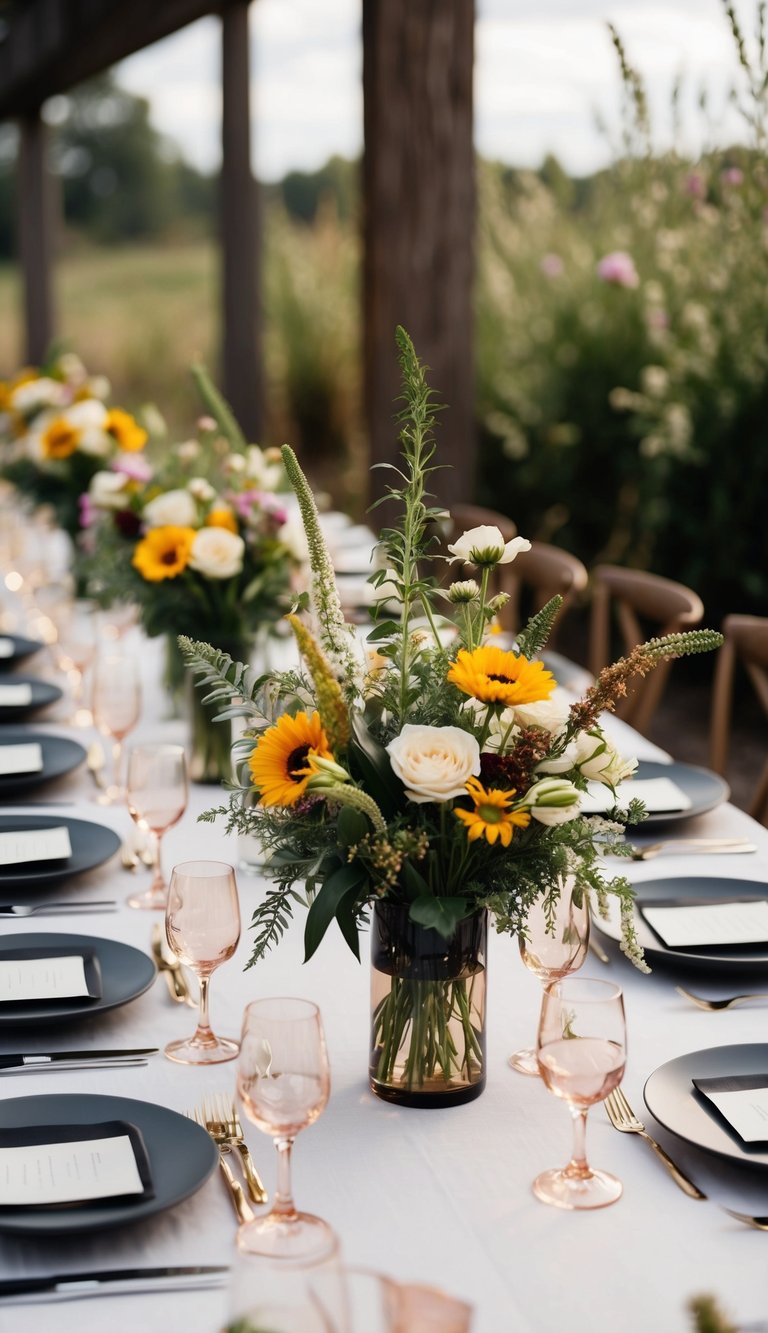
Rustic wildflower arrangements bring the carefree beauty of meadows into your home. They feature loosely gathered blooms that look as if you just picked them during a countryside stroll.
Choose a mix of daisies, Queen Anne’s lace, cornflowers, and yarrow for an authentic meadow feel. Add textural elements like dried grasses, wheat stalks, or twigs to enhance the natural appearance.
Instead of traditional vases, display your wildflowers in weathered containers. Mason jars, antique milk bottles, or even old tin cans create the perfect rustic backdrop for these casual blooms.
The beauty of wildflower arrangements lies in their imperfection. Don’t worry about symmetry or formal structure. Varying heights and an uneven distribution often create the most charming results.
These arrangements work wonderfully in country kitchens, farmhouse dining rooms, or any space where you want to add a touch of natural simplicity. Their relaxed style brings warmth and approachable elegance to your home.
3. Monochromatic elegance

Monochromatic flower arrangements create a sophisticated look by using flowers in varying shades of a single color. You can achieve striking visual impact by playing with different tones and textures within the same color family.
Choose a focal color like purple, and incorporate blooms from pale lavender to deep eggplant. The subtle variations add depth while maintaining a cohesive appearance that feels intentional and refined.
White monochromatic arrangements offer timeless elegance for weddings and formal events. Mix white roses, lilies, and hydrangeas with silvery greenery for a classic look that never goes out of style.
For a bold statement, try a red monochromatic design. Combine crimson roses, burgundy dahlias, and wine-colored carnations to create visual interest while staying within your color scheme.
The key to successful monochromatic arrangements is varying the flower shapes and sizes. Include round blooms, spiky flowers, and cascading elements to create dimension despite the limited color palette.
When creating your arrangement, position darker shades toward the bottom and lighter tones at the top to mimic how light naturally falls.
4. Succulent-infused display

Succulent-infused flower arrangements combine the delicate beauty of blooms with the structural interest of succulent plants. You can create these displays in shallow dishes, allowing both elements to shine together.
Choose succulents with interesting shapes like echeveria, haworthia, or sedum. Their thick, water-storing leaves provide wonderful texture contrast to soft petals. Small succulents work best as they won’t overwhelm the flowers.
For flower selection, opt for varieties that complement the dusty greens and purples of succulents. Roses, ranunculus, and dahlias in muted tones create a harmonious look. Desert-inspired blooms like protea or leucadendron also pair beautifully.
Use floral foam or moistened moss as your base material. This keeps both elements happy—succulents need less moisture than cut flowers. Position your succulents first, then add flowers around them.
The best part of these arrangements is their longevity. When the cut flowers fade, you can remove them while the succulents continue thriving. You can even transplant the succulents to your garden after the display is done.
5. Bohemian pampas grass
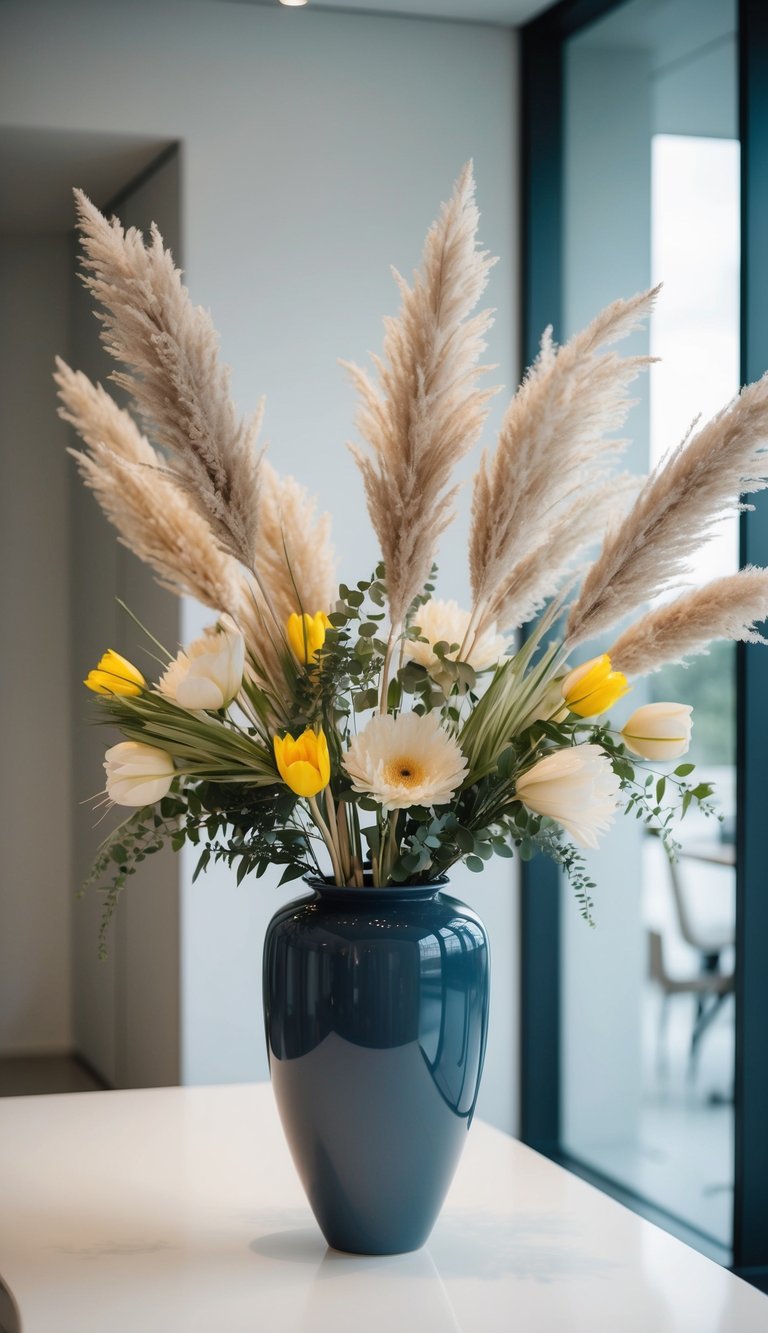
Pampas grass has become a staple in bohemian-inspired flower arrangements. Its fluffy, feathery plumes add texture and a dreamy quality to any display.
You can use pampas grass as the focal point of your arrangement. Its neutral tones of cream, tan, and sometimes blush complement almost any color scheme in your home.
For a truly bohemian look, pair pampas grass with other dried elements. Try incorporating dried palm fronds, bunny tails, or bleached ruscus to create depth and visual interest.
You can display pampas grass in a variety of containers. Terracotta pots, woven baskets, or ceramic vases all enhance the boho aesthetic. Consider using vessels with interesting textures or patterns.
To maintain your pampas grass arrangement, keep it away from high humidity areas. Spray it lightly with hairspray to prevent shedding and extend its lifespan.
You can also dye pampas grass for a more colorful bohemian display. Soft pastels or muted tones work well while maintaining the natural, earthy feel that defines bohemian style.
6. Tropical exotic mix

A tropical exotic mix brings the vibrant energy of paradise to your home. This arrangement features bold tropical flowers like bird of paradise, anthurium, and protea. You can add colorful ginger flowers and orchids for extra flair.
Tropical arrangements often include unique foliage to complement the flowers. Large monstera leaves, palm fronds, and ti leaves create a lush backdrop for the bright blooms. These leaves add texture and that authentic tropical feel.
Choose a container that enhances the exotic theme. Bamboo vessels, ceramic pots with tribal patterns, or even coconut shells work well for smaller displays. You might add natural elements like river stones or driftwood to complete the look.
Color is key in tropical arrangements. Embrace vibrant oranges, hot pinks, sunshine yellows, and electric blues. These bold colors capture the essence of tropical destinations and create visual impact in any room.
Tropical arrangements last quite well in warm environments. Most tropical flowers have naturally sturdy stems and thick petals that hold up beautifully. You’ll enjoy this exotic display for many days with proper care and fresh water.
7. Classic rose centerpiece
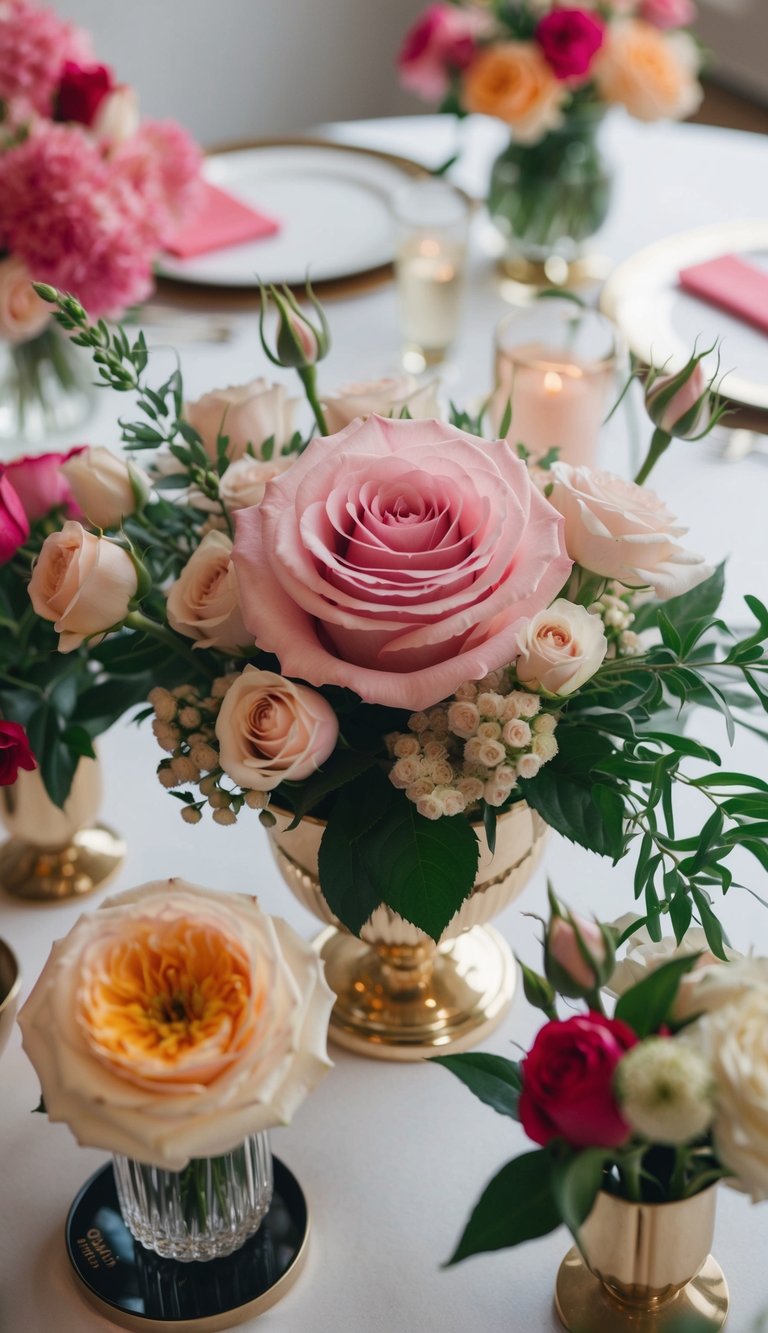
The classic rose centerpiece remains a timeless choice for elegant dining tables and special events. Roses symbolize love and beauty, making them perfect for weddings, anniversaries, or sophisticated dinner parties.
You can create this arrangement using roses in various colors to suit your event theme. Red roses convey passion, while white represents purity, and pink shows appreciation and gratitude.
Start with a low, round vase to ensure guests can see each other across the table. Add floral foam soaked in water to hold the stems securely in place.
Cut your roses to different heights, keeping the tallest stems in the center and gradually decreasing height toward the edges. This creates a rounded, dome-like appearance that looks polished from all angles.
Consider adding greenery like eucalyptus or fern between the blooms for texture and contrast. Baby’s breath can also complement roses beautifully while adding a delicate touch.
For a more luxurious look, use a single color of roses in varying stages of bloom. This creates depth and interest while maintaining an elegant, cohesive appearance.
8. Modern geometric vase
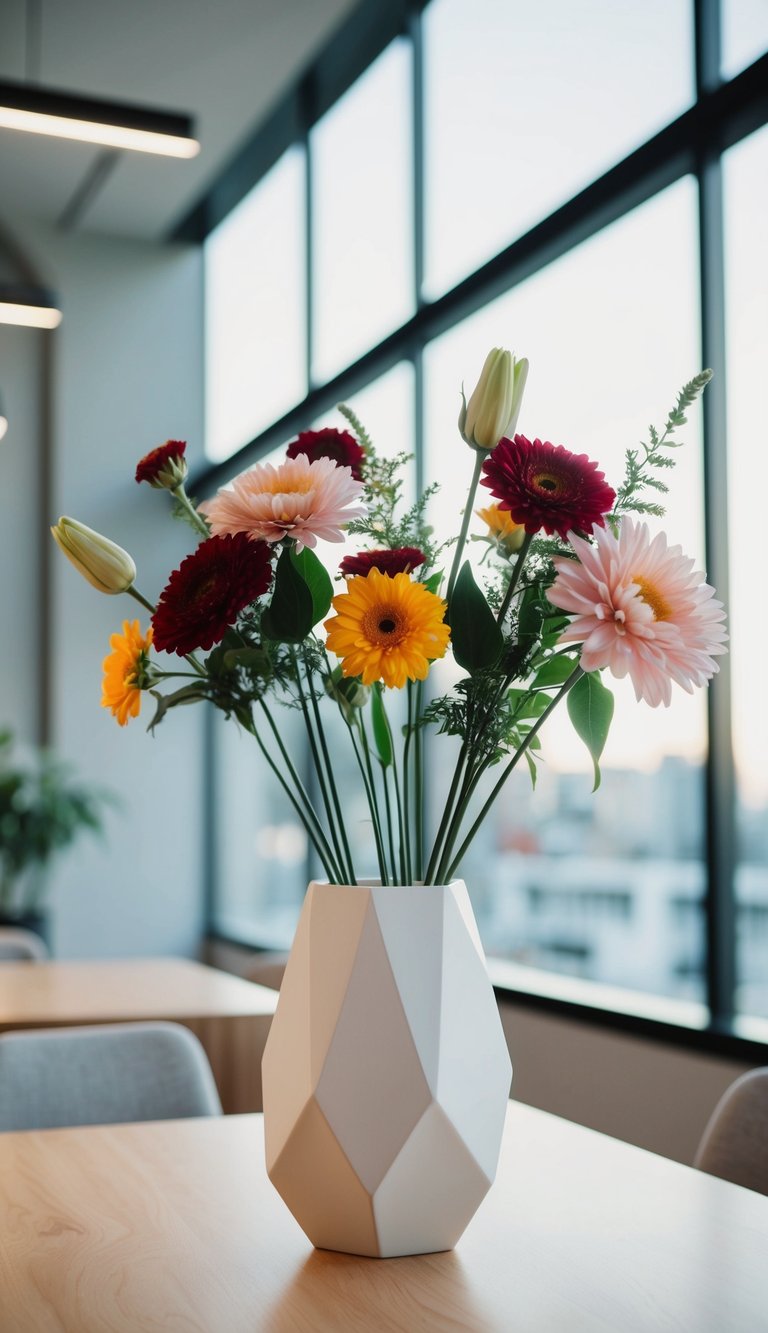
Geometric vases add a contemporary touch to any flower arrangement. These vases feature clean lines, bold angles, and striking shapes that stand out even before you add flowers.
You can find geometric vases in materials like ceramic, metal, or glass. Their unique shapes create visual interest and serve as art pieces themselves.
When selecting flowers for a geometric vase, consider simple arrangements that complement rather than compete with the vase design. Single-stem flowers or minimal groupings often work best.
Try pairing angular vases with soft, rounded blooms for a pleasing contrast. Tulips, ranunculus, or peonies create a beautiful juxtaposition against sharp lines.
For a cohesive look, match your flower colors to accent colors in your room. This ties the arrangement into your existing décor.
Clear glass geometric vases allow you to showcase interesting stems and water, adding another dimension to your display. Metal vases can reflect light and add sparkle.
Remember that the height of your flowers should balance with the vase. Too tall and they may look awkward; too short and they get lost in the design.
9. Dried floral arrangement
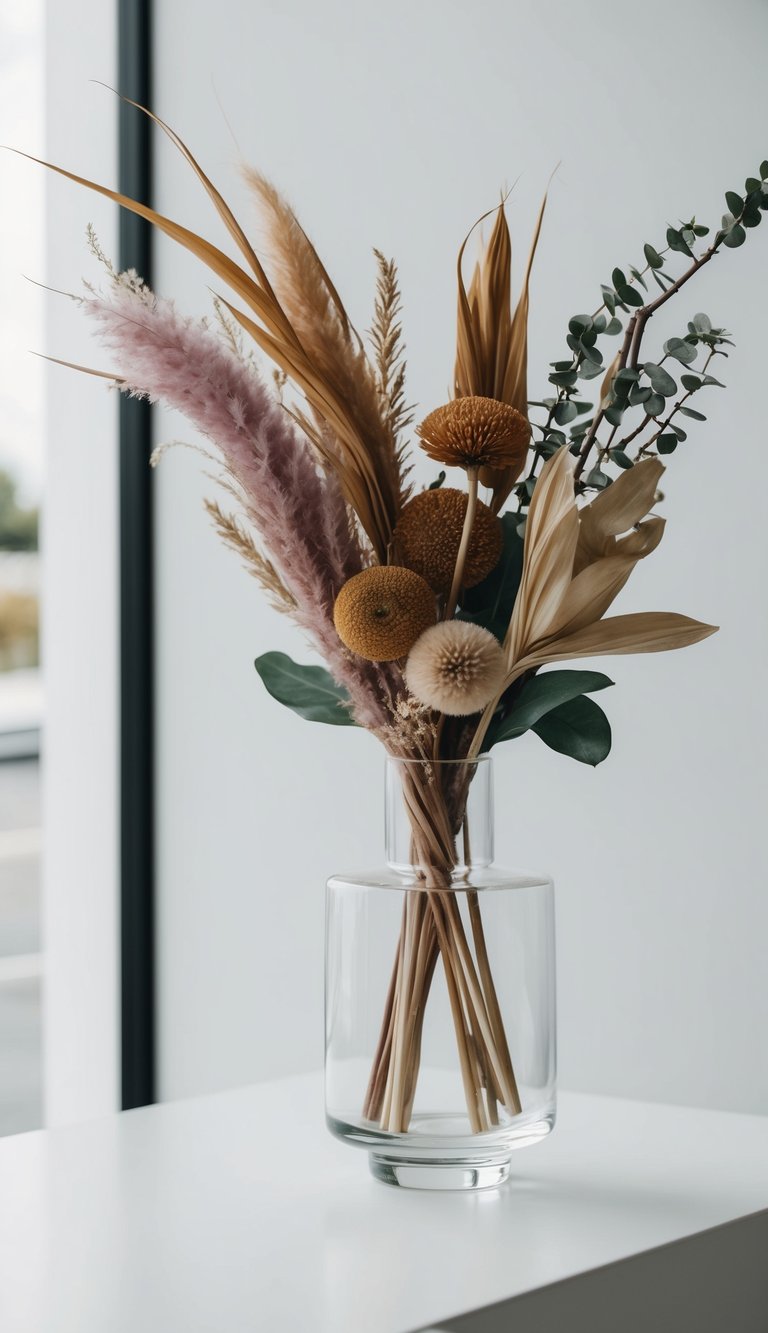
Dried floral arrangements offer long-lasting beauty without the maintenance that fresh flowers require. You can create stunning displays using dried blooms that maintain their charm for months or even years.
Start by selecting dried flowers with varied textures and heights. Popular choices include lavender, statice, strawflower, and dried roses. These provide different visual elements that make your arrangement interesting.
Consider using neutral-colored vessels like ceramic vases or woven baskets to showcase your dried flowers. The natural container complements the rustic appeal of dried botanicals.
You can enhance your arrangement with dried grasses and seed pods for additional texture. Pampas grass, bunny tails, and wheat stems add movement and dimension to your display.
Remember to place your dried arrangement away from direct sunlight to prevent fading. Unlike fresh flowers, dried arrangements don’t need water, making them perfect for spaces where you want lasting decor without daily care.
Try incorporating seasonal elements like dried citrus slices in winter or dried sunflowers in fall. This keeps your arrangement feeling current throughout the year.
10. Seasonal wildflower bouquet
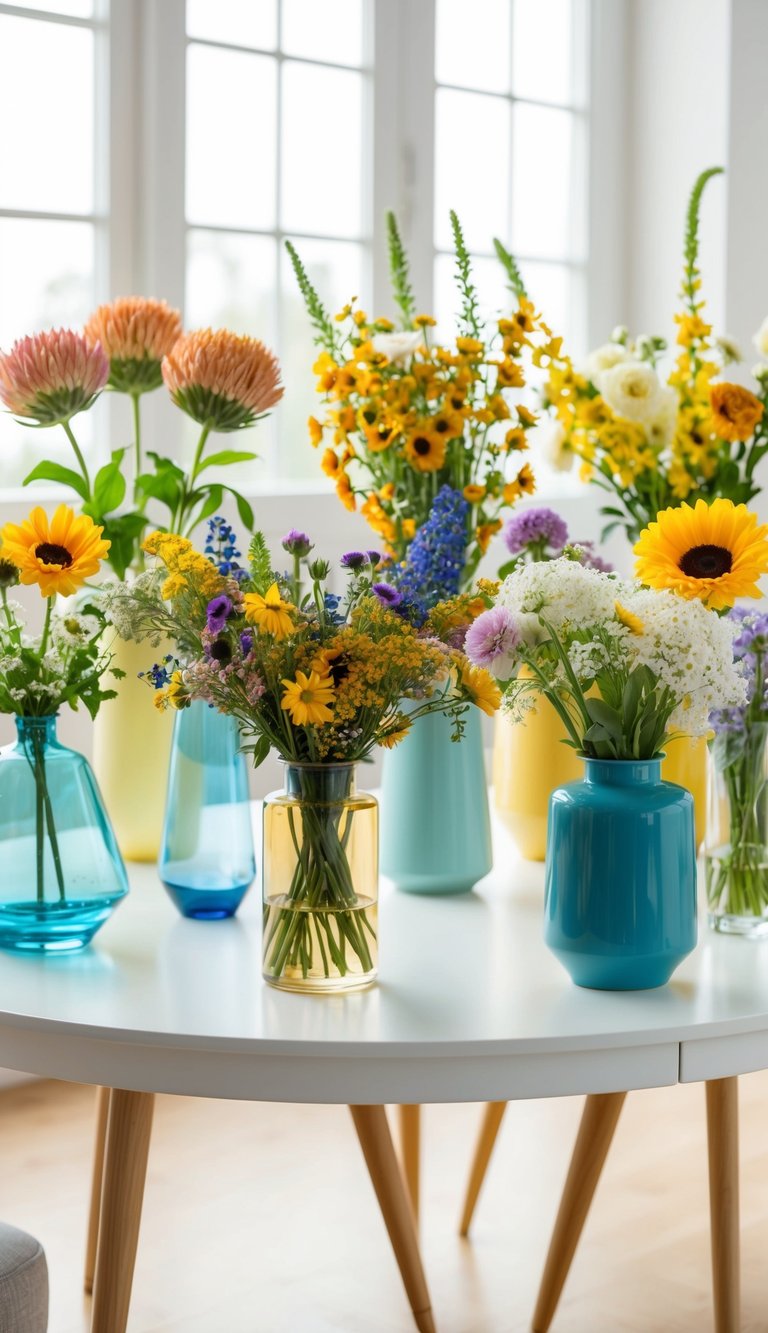
Seasonal wildflower bouquets bring nature’s untamed beauty into your home. These arrangements celebrate local flora and change with the seasons, offering a fresh look throughout the year.
In spring, you might include daisies, bluebonnets, and primroses in your bouquet. Summer brings vibrant black-eyed Susans, Queen Anne’s lace, and colorful cornflowers to brighten your space.
Fall wildflower arrangements can feature goldenrod, asters, and dried grasses for a warm, rustic feel. Winter arrangements might incorporate dried seedpods, berries, and evergreen elements that withstand the colder months.
When creating your wildflower bouquet, gather flowers in the morning when stems are hydrated. Choose blooms at different stages—some buds, some fully open—for a longer-lasting display.
Arrange your wildflowers loosely in a simple container like a mason jar or ceramic pitcher. The casual, “just-picked” look is part of their charm. Wildflowers typically need changing every 3-5 days, as their delicate nature means shorter vase life than cultivated flowers.
Sustainable gathering is important when collecting wildflowers. Take only what you need and avoid endangered species or protected areas.
Design Principles of Contemporary Flower Arrangements
Contemporary flower arrangements follow specific principles that combine traditional techniques with modern aesthetics. These designs focus on creative expression while maintaining visual appeal through careful consideration of balance, space utilization, and color relationships.
Balance and Harmony
Balance creates visual stability in flower arrangements. Symmetrical balance uses identical elements on both sides, creating a formal look perfect for elegant settings.
Asymmetrical balance places different elements that have equal visual weight across the arrangement. This approach feels more dynamic and modern. You’ll notice this style frequently in contemporary designs.
Scale and proportion matter too. Large blooms should be balanced with smaller flowers and appropriate greenery. When designing, consider the container’s size relative to the arrangement height—typically, arrangements should be 1.5 to 2 times taller than their container.
Harmony comes from creating a cohesive look where all elements work together. You can achieve this through repetition of shapes, textures, or colors throughout the arrangement.
Use of Negative Space
Negative space is the empty area around and between flowers. Contemporary designs intentionally incorporate these spaces to:
- Create visual breathing room
- Highlight individual blooms
- Add drama and sophistication
- Allow each element to stand out
Unlike traditional packed arrangements, modern designs embrace minimalism. You might use just a few statement flowers with strategic spacing between them.
Japanese ikebana heavily influences this approach with its philosophy that less is more. The space becomes as important as the flowers themselves.
Try placing stems at different heights and angles to create deliberate gaps. This technique draws the eye to specific focal points while giving the arrangement a light, airy quality.
Color Theory in Floral Design
Color choices dramatically impact the mood of your arrangement. Monochromatic designs use variations of a single color for subtle elegance. You might combine light pink roses with deeper magenta dahlias.
Complementary colors sit opposite each other on the color wheel (like purple and yellow). These high-contrast pairings create vibrant, energetic arrangements.
Analogous color schemes use colors adjacent on the wheel, like blue, blue-purple, and purple. This creates a harmonious, cohesive look.
Consider the emotional impact of colors too:
- Reds and oranges feel warm and energetic
- Blues and purples appear cool and calming
- Whites and greens provide a fresh, clean aesthetic
The setting matters—bright colors stand out in minimal spaces, while neutral arrangements complement colorful environments.
Materials and Tools for Modern Arrangements
Creating stunning contemporary flower arrangements requires the right supplies and equipment. Today’s florists combine traditional elements with innovative alternatives that reflect modern design values.
Eco-Friendly Alternatives
Floral foam is being replaced by more sustainable options in modern arrangements. You can use chicken wire formed into balls or grids as an excellent alternative. This allows water to circulate freely while providing sturdy support for stems.
Recycled glass containers offer both environmental benefits and sleek aesthetics. Look for vessels made from repurposed bottles or jars that add an industrial-chic element to your arrangements.
Plant-based twine and biodegradable tape have become essential for eco-conscious florists. These materials decompose naturally after use, reducing environmental impact without sacrificing functionality.
Water-saving gels help extend flower life while using less water. These crystals absorb and slowly release moisture, making them perfect for drought-conscious designers.
Tools for Precision and Creativity
Sharp, high-quality pruning shears are your most important investment. Look for ergonomic designs with titanium-coated blades that maintain sharpness longer and reduce hand fatigue during detailed work.
Wire cutters and thin gauge wire allow you to manipulate stems precisely. You can create dramatic angles and secure top-heavy blooms in unexpected positions for truly contemporary looks.
Specialized stem strippers remove thorns and excess foliage quickly. This protects your hands and ensures clean lines in minimalist arrangements.
Spray bottles with adjustable nozzles help maintain hydration while working. Fine mists prevent water spots on delicate petals during the design process.

